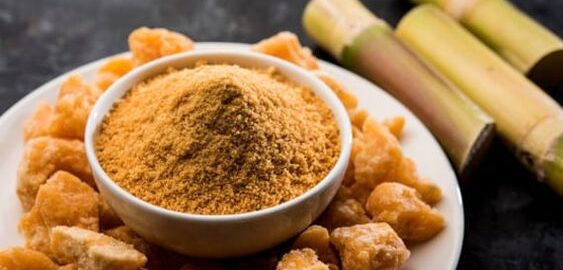Introduction:
Discover the wonders of suji, a versatile and nutritious ingredient that has been a staple in kitchens around the world for centuries. Also known as semolina, suji is a coarsely ground grain derived from durum wheat. With its unique texture and rich flavor, suji has found its way into a wide variety of culinary creations, ranging from hearty breakfast dishes to delectable desserts. In this comprehensive guide, we will delve into the origins of suji, explore its nutritional benefits, and uncover the myriad of ways it can be incorporated into your everyday cooking.
The Origins of Suji: From Wheat to Semolina
Before we delve into the uses and benefits of suji, let’s take a closer look at its origins and how it is produced. Suji is derived from durum wheat, a hard variety of wheat that is notable for its high protein content and gluten strength. The wheat kernels undergo a process called milling, which involves grinding the grains into various textures. Suji is created by coarsely grinding the endosperm of the durum wheat, resulting in a granular product that retains the natural flavors and nutrients of the grain.
Nutritional Benefits of Suji: A Powerhouse of Nutrients
Suji is not only a culinary delight but also a nutritional powerhouse. Packed with essential nutrients, it offers numerous health benefits when incorporated into a balanced diet. Here are some key nutritional highlights of suji:
- Rich in Protein: Suji is an excellent source of plant-based protein, making it a valuable ingredient for vegetarians and vegans. Protein is essential for the growth and repair of tissues, as well as the production of enzymes and hormones.
- Complex Carbohydrates: Suji is a complex carbohydrate, which means it provides a slow and steady release of energy, keeping you satiated for longer periods. This makes it an ideal choice for those looking to manage their weight or maintain stable blood sugar levels.
- Fiber Content: Suji is a good source of dietary fiber, aiding in digestion and promoting a healthy digestive system. Fiber helps regulate bowel movements and can contribute to reducing the risk of certain digestive disorders.
- Essential Minerals: Suji contains essential minerals such as iron, magnesium, and phosphorus. Iron is vital for oxygen transportation in the body, while magnesium and phosphorus play crucial roles in bone health and energy metabolism.
Versatility in the Kitchen: Exploring Suji’s Culinary Possibilities
Suji’s unique texture and nutty flavor make it a versatile ingredient that can be used in a multitude of dishes. Let’s explore some of the ways you can incorporate suji into your culinary repertoire:
- Breakfast Delights: Start your day off right with suji-based breakfast dishes. Whip up a batch of fluffy suji pancakes or savor a hearty bowl of suji porridge infused with your favorite flavors such as cinnamon, cardamom, or fresh fruits.
- Savory Creations: Suji shines in savory dishes as well. Use it to make delicious and crispy dosas, savory pancakes popular in South Indian cuisine. Alternatively, prepare suji upma, a flavorful and wholesome dish made by sautéing suji with vegetables, spices, and aromatic herbs.
- Irresistible Desserts: Suji lends itself beautifully to desserts, adding a delightful texture and richness. Treat yourself to a slice of warm suji halwa, a sweet semolina pudding infused with ghee, sugar, and fragrant spices. You can also explore suji-based cakes, cookies, and puddings for a delectable sweet indulgence.
Suji and Health: Promoting Overall Well-being
Beyond its culinary applications, suji offers several health benefits that contribute to overall well-being. Here are some notable advantages:
- Weight Management: Suji’s high protein and fiber content make it a satiating choice, helping you feel full for longer and potentially aiding in weight management efforts.
- Heart Health: The complex carbohydrates in suji provide a slow release of energy, preventing sudden spikes in blood sugar levels. Additionally, suji is low in saturated fats, making it heart-friendly when consumed as part of a balanced diet.
- Digestive Health: Suji’s fiber content promotes healthy digestion, alleviating constipation and supporting a well-functioning digestive system.
- Energy Boost: Suji’s complex carbohydrates provide a sustained release of energy, making it an excellent choice for athletes or individuals looking to fuel their active lifestyles.
Tips for Cooking with Suji: Unleashing its Potential
To make the most of suji’s culinary potential, consider the following tips when cooking with this versatile ingredient:
- Toasting for Enhanced Flavor: Before incorporating suji into your recipe, consider toasting it lightly in a dry pan. This process enhances its nutty flavor and adds a subtle depth to your dishes.
- Proper Liquid Ratio: When preparing dishes such as upma or halwa, ensure you use the correct liquid-to-suji ratio. This ensures the perfect texture and consistency of your creations.
- Experiment with Flavors: Suji is incredibly adaptable and can be paired with a wide range of flavors. Don’t be afraid to experiment with spices, herbs, and other ingredients to create unique and delicious dishes.
Conclusion:
In conclusion, suji, or semolina, is a versatile and nutrient-packed ingredient that can elevate your culinary creations. With its origins deeply rooted in durum wheat, suji offers a host of health benefits while providing a delightful texture and flavor. From breakfast delights to savory creations and irresistible desserts, suji’s culinary possibilities are truly endless. So, why not explore this grain’s potential in your kitchen and savor the diverse dishes it can help you create? Embrace the wonders of suji and let your taste buds embark on a delectable journey.









